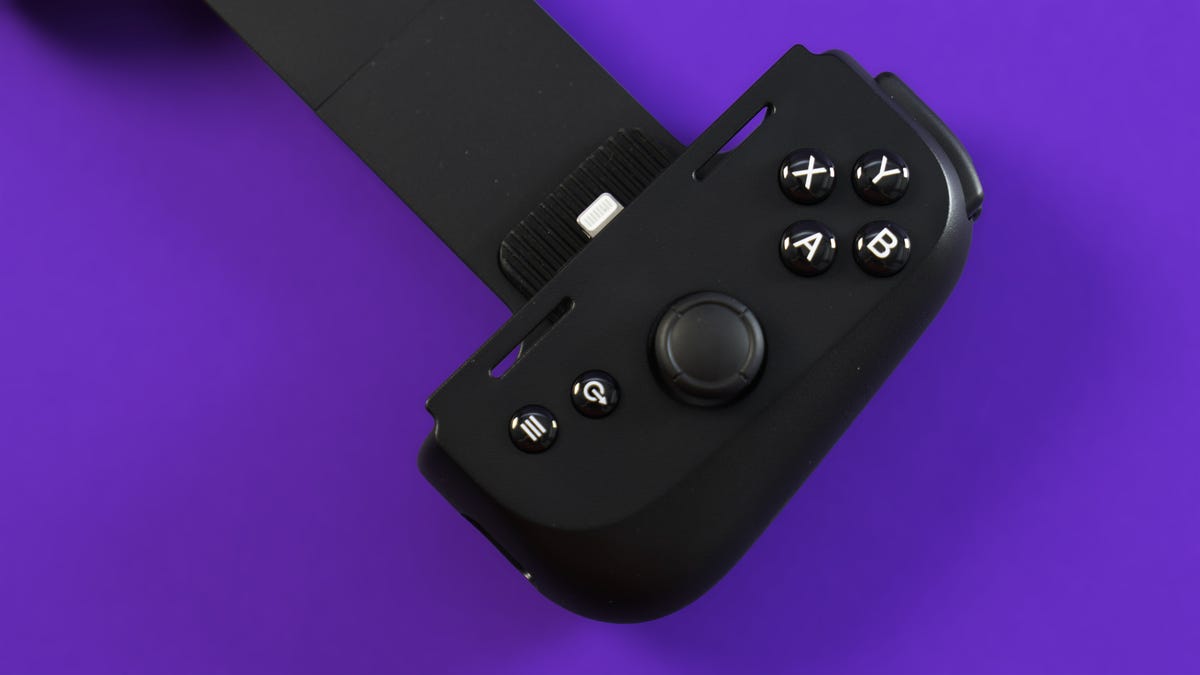
Razer Kishi V2 for iPhone Review: A Solid Game Controller Debut on iOS
Just like the Backbone One PS5 Edition controller is nearly identical to the spoiled model, Razer's Kishi V2 for iPhone is identical to the Android-compatible model from spinal this year. The connectors are the only difference in the Kishi V2 for iPhone, which has MFi-certified Lightning for both the phone connection and the noteworthy passthrough connector. The Backbone One and Razer Kishi V2 have disagreement hardware, different software and (unsurprisingly) the same $100 price.
The controller is compatible with any iPhone with a Lightning connector and organization iOS 15.4 or later -- as far back as the iPhone 6. Like the Android version, you can adjust for thicker phones by removing the rubber bumpers on either side. That does make me a small nervous, since it means the plastic is up in contradiction of the metal of the phone in a few spots.
Though Razer doesn't security it will work with a phone case -- an important feature none of these Fast controllers guarantee -- I did get it to work with a thin case. Once. The next time I tried, the connector didn't seem to be able to Come far enough; annoying, since I bought this case specifically for these controllers because my normal case for the iPhone 13 Pro is too... protective.
Otherwise, the Kishi V2 for iPhone functions and feels identically to the Android model. Like the Backbone One, the Kishi is essentially a Fast Xbox-layout controller with a plastic expander connecting the two sides. You slip your phone in, plug the Lightning port into the matching connector and pull the left side to match the top of the called, which is kept in place by tension and the plastic bridge. The controller draws power from the phone, though it doesn't seem to pull a lot, and uses the Lightning connector for low-latency response (relative to Bluetooth). It can charge via a passthrough connector, but it doesn't Help audio through that.
In addition to triggers and bumpers at the top, there are Little mappable buttons. I like having extra buttons, because I like to avoid having to click via the thumbsticks, which for me usually results in unwanted movement. The trade-off is the triggers are on the Little side, though they don't feel too small and are sufficiently recessed that you won't hit them when arriving for the buttons. And they have nice tension, better than some full-size controllers I've used.

The only difference between the Android and iPhone versions of the controller is the Lightning connectors.
Lori Grunin
It uses an iOS version of Razer's Nexus app, which grants you to rebind the controls globally. That's a nice feature, but the app is otherwise is uninspiring. It's not Big at managing games: You can't organize your favorites or recents, and its discovery suggestions are only for iOS games that Help controllers -- no cloud games, no search. There isn't even a Part for Apple Arcade games. It does list a few Netflix games, though those are also written for iOS.
The hardware is Difference to the Backbone One, but the Backbone's software is smarter, which gives it a decided advantage especially if you're a seriously social gamer. I like the Kishi V2 for iPhone, but the hassle of Funny these split controllers with phone cases keeps driving me back to the full-size clip-ons.
Blog Archive
-
▼
2021
(335)
-
▼
September
(8)
- Razer Kishi V2 for iPhone Review: A Solid Game Con...
- 2022 Ford Bronco Everglades Review: Form Begets Fu...
- Vizio M-Series Quantum X Review: Bright HDR Pictur...
- Xgimi Halo Plus Portable Projector Review: Big Pic...
- 'Elvis' Review: Over-the-top Biopic Is Streaming N...
- 'Tolkien' Review: 'Lord of the Rings' Biopic Revea...
- Galaxy Z Fold 4 Review: Why I Can't Get Enough of ...
- Asus Zenbook S 13 OLED (UM5302) Review: Superb Lit...
-
▼
September
(8)
Labels
Total Pageviews
Search This Blog
Popular Posts
-
'Doctor irregular and the Multiverse of Madness' Review: Marvel Magic Casts a Horror Spell After more than a decade and dozens...
-
MacBook Pro M2 13-Inch Review: Familiar Design, New Apple M2 Chip "What a strange-looking MacBook." That was my first-rate t...
-
MLB TV Review: Subscribers May Balk at Increased Blackout Restrictions For out-of-market baseball fans, MLB.TV is the only game in town...
